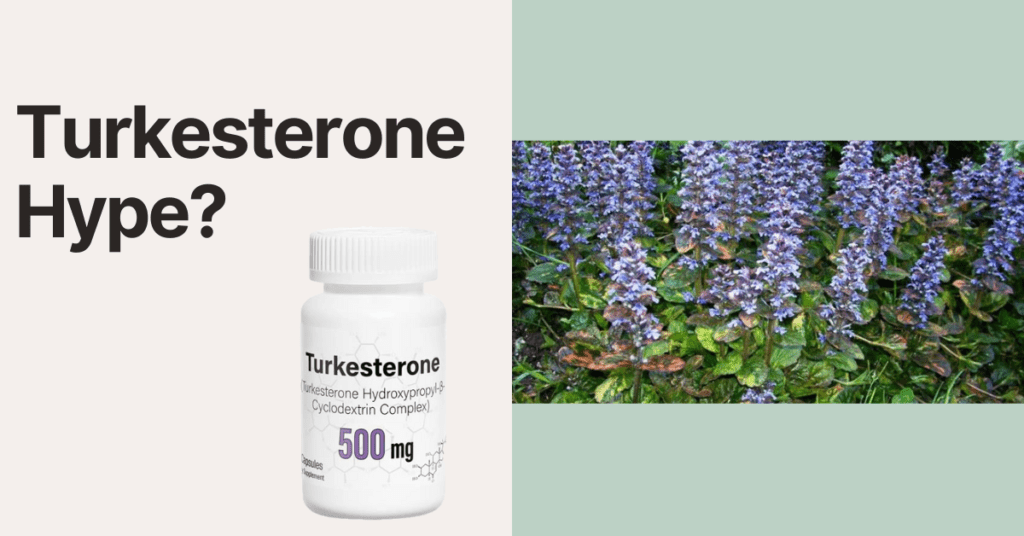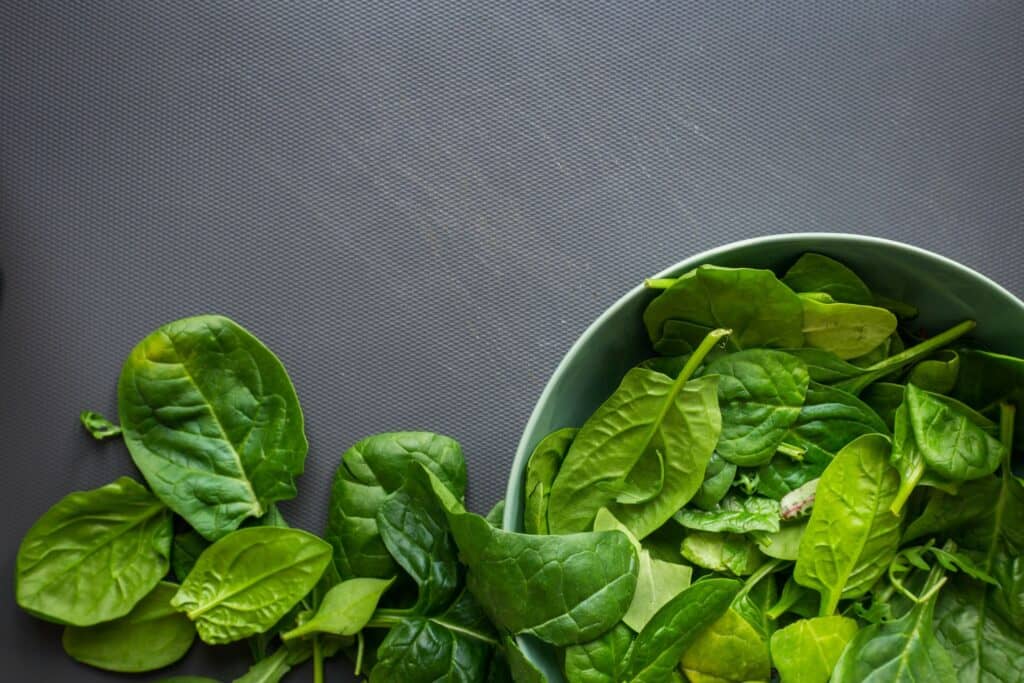
Turkesterone is part of a class of compounds called ecdysteroids. Ecdysteroids are the androgens of insects, and are responsible for molting. Molting is part of the growth process where an insect sheds its exoskeleton.
These compounds are thought to exhibit anabolic effects in humans, like strength and muscle gains. Turkesterone, often combined with other ecdysteroids, can be found in supplement form.
Contrary to popular belief, Turkesterone is not a new supplement. The first experiment on Turkesterone was performed in 1976 in Russia, where the anabolic properties of rats were studied [1].
Fitness enthusiasts are constantly looking for an edge when it comes to performance. This can be a challenge for those who want to remain natural and not turn to illegal substances. Ecdysteroids are natural compounds found in various plants.
Turkesterone has shown promising research in rodent models when it comes to muscle gain, but the human study data is less convincing.
Overall, the research on turkesterone is limited. A search for “turkesterone” on Pubmed only yields 27 results.
While each ecdysteroid share similar traits, they are not all the same. Sometimes, even in research reviews, they are falsely grouped together when discussing the efficacy of their individual use.
As a result, you may see a study referenced in an article about Turkesterone, but the study itself used a different ecdysteroid. For example, someone may extrapolate data on ecdysterone, another ecdysteroid, and use it to make claims about turkesterone. Again, they are similar compounds but not the exact same.
Turkesterone is considered to be the most powerful ecdysteroid.
The Theory Behind Turkesterone and Muscle Growth
Turkesterone, along with other ecdysteroids, acts on the estrogen receptor beta. It is a pathway toward muscle growth that is not often considered.
A rodent study showed that activation of estrogen receptor beta stimulated muscle growth [2]. In addition, activation of estrogen receptor beta, along with the administration of testosterone, stimulated more muscle growth than testosterone on its own.
This shows the potential for estrogen receptor beta to elicit muscle growth. When looking for compounds to build muscle, most people look to things that will act on androgen receptors.
Androgen receptor agonists, along with compounds that upregulate androgen receptors in muscle, are certainly viable. They will yield powerful muscle-building effects. However, they often come with harsh side effects.
Turkesterone is appealing because it is void of androgenic activity, meaning it does not have the side effects associated with typical (illegal) androgens. That means it will not cause hair loss or induce aggression.
A separate rodent study that directly tested the effects of ecdysterone showed increases in muscle fiber size [3].
The most comprehensive rodent study compared the effects of multiple ecdysteroids with other anabolic compounds [4]. This is the study most often cited by advocates of turkesterone.
Ecdysterone performed well, up to par or even exceeding other compounds. However, turkesterone lead to greater weight gain (the measurement used to demonstrate anabolic activity) than any other compound. This includes Nerobol, also known as Dianabol, which is an anabolic steroid!
Now, nobody is suggesting that turkesterone is as powerful as an anabolic steroid, despite the results of the study. Turkesterone is widely available in supplement stores, and let’s just say “results aren’t typical.”
People may scoff at these studies since they were performed in rodents. And they may be completely justified in doing so. However, rodent studies correlate relatively well with human studies.
They also allow the researchers to be creative in their methods. Due to obvious ethical reasons, researchers can do more with rodents than they can with humans.
Studies That Refute the Ecdysteroid Claims
Not all of the research on turkesterone and ecdysteroids is as convincing.
For example, the study most often cited was one in which a group of participants were given 100mg of Polypodium Vulare/Suma Root standardized 30mg of 20-hydroxyecdysane. Again, this 20-hydroxyecdysane is similar but not the same exact compound as turkesterone.
In the study, 45 young men in their early 20’s were divided into four groups [5]. This means only 11 men were in the ecdysteroid group. Two groups received unrelated compounds; the final group was given a placebo. The participants were resistance trained and had not used any ergogenic aid for 6 months up until the experiment.
In that regard, the study was well-designed. However, it was not without its flaws. Subjects in the ecdysteroid group were only given 100mg, while some dietary supplements on the market have upwards of 500mg in one serving.
In addition, there are inconsistencies in the study data. The methods section of the abstract states that the ecdysteroid group received 200mg, while the supplement protocol section states they received 100mg.
No statistically significant differences in performance or body composition were found in the group supplementing with the ecdysteroid. The metrics tested were fat-free mass, bench press 1RM, sprinting ability, and testosterone.
This is one of the few human studies conducted on ecdysteroid use.

Natural Sources of Turkesterone
While the most potent form of Turkesterone and ecdysteroids will be found via supplementation, there are natural foods that contain them.
Spinach, quinoa, and asparagus are all natural sources of ecdysteroids, with spinach having the highest concentration [6].
However, the ecdysteroid content of spinach was found to be highly variable.
WADA’s Monitoring of Ecdysteroids
The World Anti-Doping Agency (WADA) is the most prominent drug testing organization in sports. They are known for their Olympic drug testing, but work with other federations as well.
Each year WADA puts out a monitoring list. This is a list of supplements and supplement ingredients they keep their eye on, due to the potential for performance-enhancing effects.
Of course, there are plenty of performance-enhancing supplements that WADA deems are fine to use. These include creatine, vitamins, and the like.
However, if they feel something is a little too good, they may add it to the banned substance list. Before that occurs, they will usually add it to the monitoring list.
Ecdysteroids have been on WADA’s monitoring list for 4 consecutive years (2020-2023).
This could mean a number of things. It could mean that they are getting ready to ban it. But, it could also mean that they’re unimpressed by the research thus far and will take it off the list one day.

Conclusion
Turkesterone is a polarizing supplement. It doesn’t help when you take into consideration the unregulated nature of the supplement industry, and the difficulties of getting your hands on legitimate turkesterone.
The anecdotal data is highly variable as well. Some people tout the strength gains and enhanced recovery, while others claim it did nothing for them. This also harkens back to the challenges of getting a quality supplement.
It likely shouldn’t be the foundation of any supplement stack until more research comes out. With that said, if you have $50 to spend, you’re probably better off taking something like turkesterone with a high ceiling rather than a testosterone booster which will likely do nothing.
References
1. https://pubmed.ncbi.nlm.nih.gov/935080/
2. https://pubmed.ncbi.nlm.nih.gov/22278942/
3. https://pubmed.ncbi.nlm.nih.gov/24974955/
4. https://link.springer.com/article/10.1007/BF02524596
5. https://pubmed.ncbi.nlm.nih.gov/18500969/
6. https://www.ncbi.nlm.nih.gov/pmc/articles/PMC7356866/
Recent Posts
Stretching Before Workouts: Essential Warmup or Performance Killer
“Don’t stretch before workouts, your muscles become too supple” “Stretch before your workouts, warming up is important” It's conflicting advice like this that drives people crazy,...
Best Protein Bar For the Money | Cost Effective, High Quality
Protein bars are no longer a supplement dedicated to diehard gym rats, with awful taste and the consistency of a brick. Men, women, and even teenagers can commonly be seen eating protein bars. The...
